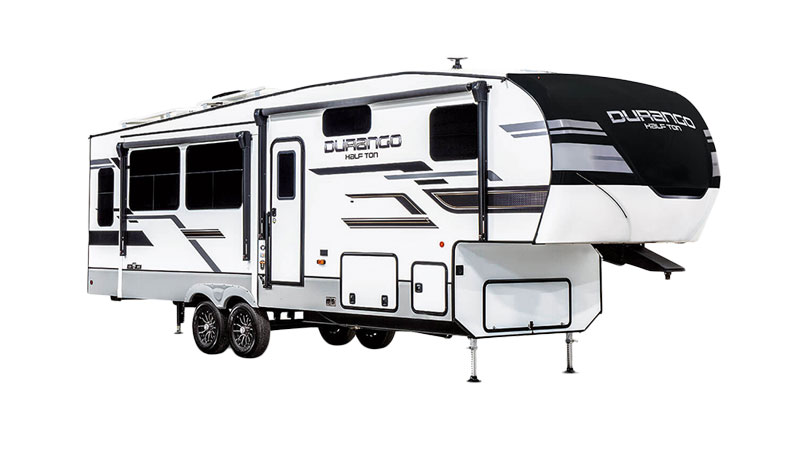Using satellite images from either Google Maps or Gaia GPS can help you assess the roads to ensure you feel comfortable driving them. Here’s what I look for:
Road Conditions
Cliff Edges: I check if the road is on the edge of a cliff. The easiest way to do this is by using the “3D” feature.
Switchbacks: I also check for any switchbacks on the road to the campsite, as these can be challenging to navigate with a large RV.
Campsite Environment
Tree Cover: I check if the campsite is under heavy tree cover. Since I operate on solar power and use Starlink, both need clear skies to function efficiently. Therefore, I look for areas with openings in the tree cover to ensure optimal performance.
Electricity
When camping in RV parks, you’re used to plugging into a power source that keeps all your RV’s appliances running. But in dispersed camping areas in National Forests, there are no power pedestals. Here’s how you can stay powered up while camping:
- Option 1: Upgrading Your RV Batteries: Swapping your RV's old batteries for upgraded ones is a simple way to get power for a few days. I used upgraded batteries for a month, and they provided power for days at a time. Changing the batteries takes about 20 minutes. Just remember, RV batteries store power but don’t create it. Once they’re drained, you need to recharge them by plugging them into an electric source. This is a great option for weekend camping.
- Option 2: Adding Solar Panels: You can use either portable or rooftop solar panels. I have rooftop panels now and plan to add portable ones later for additional solar. Solar panels charge your RV batteries, which power your RV. At night, you rely on your batteries, so having a good battery setup is key for a functional solar system.
- Option 3: Combining Solar Panels and Upgraded Batteries: Combining solar panels with upgraded batteries provides a steady power supply. I ended my trip with 800 watts of rooftop solar connected to a large battery bank. My setup is a complex 24V solar system that I installed myself, but you can hire a professional if needed.

With this setup, I can run my fridge, TVs, Starlink, and more all night. During the day, my solar panels recharge the batteries, even if I use my microwave or air fryer. This setup works well for full-time RV living and allows me to enjoy amenities like watching TV while camping in a beautiful national forest. Choose the option that best fits your needs.
Internet
When camping in national forests, cell signal can be very weak or nonexistent. This makes services like T-Mobile Home Internet or hotspots unreliable for streaming TV or working. For reliable internet access, I recommend using Starlink.
Starlink is a satellite internet service that works almost anywhere, even off the grid, as long as you're not surrounded by dense trees. I use Starlink to stream Netflix and Hulu, and it’s great for work and Zoom meetings. It’s been the best internet option I’ve tried.
To get text messages with Starlink, I use Wi-Fi calling. This allows me to send texts and receive calls even when I’m completely off the grid.











